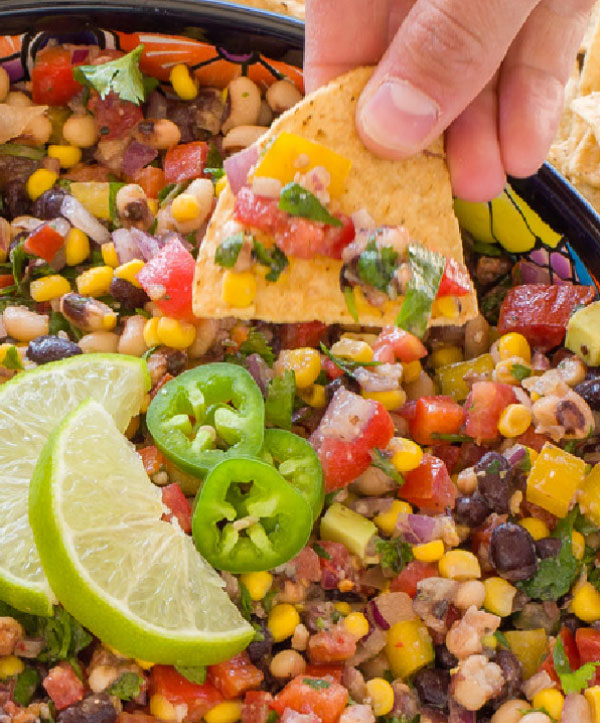
What can help you prevent heart disease, lower cholesterol, fight cancer, lose weight, manage diabetes and live longer? The answer is beans. The Bean Institute recommends eating one-half cup a day to meet the recommended amount to achieve these health benefits.
It’s not magic
Beans are chock full of slowly digestible carbohydrates, fiber, protein and important vitamins and minerals. They are natural sources of antioxidants and phytochemicals, which work in the body to decrease the risk of cancer and other chronic diseases, according to the Bean Institute.
What don’t they have? They contain no saturated fat, trans fat, cholesterol or sodium.
“There is a benefit to consuming variety in our diet,” said Karla Arrigoni, a registered dietitian at the Marshfield Clinic Rice Lake Center. She encourages you to “be adventurous and consume as much variety as possible when it comes to beans. Look for recipes that include a variety of other plant foods and limited amount of added sugar, fat and salt.”
Bean downsides
Migraines, higher blood pressure, gout, lowered vitamin absorption and gas have been noted as drawbacks to beans.
“Dietary triggers do not necessarily contribute to headache in all patients,” Arrigoni said. “For some, beans may be a trigger, but not necessarily for all who suffer from migraines.”
Arrigoni disagrees that eating beans leads to higher blood pressure. “A plant-based diet which includes beans, actually lowers blood pressure,” she said.
Beans are a moderate source of purines, Arrigoni said, which may contribute to gout.
“A lot of red meat, organ meats, poultry and fish, like anchovies, likely pose a higher risk for gout than consuming purines from plant sources, such as beans,” she said.
Beans, along with nuts and bran, contain phytic acid that will interfere with some mineral absorption. However, it will only affect the absorption of minerals at the meal or snack when they are consumed.
“Soaking beans prior to cooking lowers the phytic acid content,” she said. “In well-balanced diets, the phytic acid content of foods is rarely a concern,” she said.
Most beans contain relatively high amounts of both dietary fiber and resistant starches, which are not digested well, and as a result, ferment in our colon and cause gas, Arrigoni said. To reduce the gas-causing effect of beans, she suggests increasing consumption of beans gradually over time, soaking and rinsing them before cooking, and rinsing canned beans before consuming them.

 Healthy Cowboy Caviar
Healthy Cowboy Caviar
Prep time: 15 minutes
Servings: 8 cups
Ingredients
- 2 (14-ounce) cans black-eyed peas, rinsed and drained, or 3 cups cooked black-eyed peas
- 1 (14-ounce) can black beans, rinsed and drained, or 1½ cups cooked black beans
- 1-1/2 cups fresh corn kernels (about two ears of corn), or 1 (14-ounce) can corn, drained
- 1-1/2 cups chopped tomatoes (about four Roma tomatoes, about ¾ pound)
- 1 medium red, orange or yellow bell pepper
- 3/4 cup chopped red onion (about half a small red onion)
- 1/2 cup chopped cilantro, leaves and stems
- 1 to 2 jalapeños, ribs removed, seeded and finely chopped
- 1 avocado (optional)
Italian dressing
- 1/3 cup olive oil
- 3 tablespoons red wine vinegar or lime juice
- 2 medium cloves garlic, pressed or minced
- 1 teaspoon salt, to taste
- 1 teaspoon dried oregano
- 1/2 teaspoon dried basil
- 1 teaspoon maple syrup or honey
- 1/8 teaspoon red pepper flakes
- Freshly ground black pepper, to taste
Instructions
In a large serving bowl, combine drained black-eyed peas, black beans, corn, chopped tomatoes, bell pepper, onion, cilantro and jalapeño. If you’ll be including avocado, wait to dice it until you’re ready to serve the dip, so it doesn’t turn brown.
In a cup, whisk together dressing ingredients until emulsified. Drizzle dressing over the serving bowl and toss until well mixed. Season to taste with additional salt and pepper. For best flavor, let the mixture marinate for at least 20 minutes before serving. If you’re adding avocado, mix it in just before serving.
Note: This dip keeps well in the refrigerator, covered, for about three days.
Nutrition information
Each serving (1 cup) contains about 241 calories; 11 g total fat; 42 g carbohydrate; 7 g protein; 153 mg sodium; 6 g sugar.
Source: cookieandkate.com
Save and print recipe





Leave a Reply